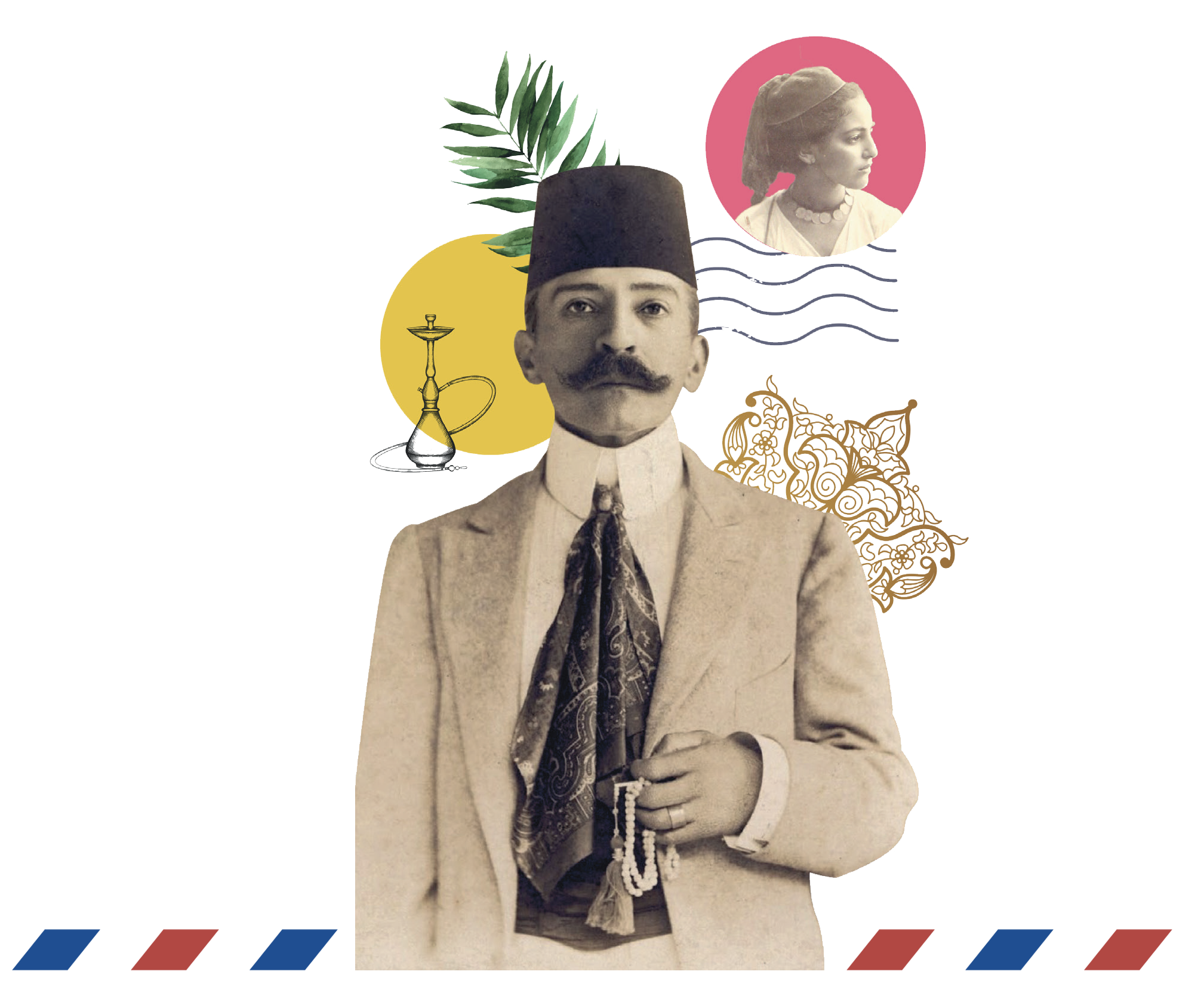Pierre Loti, whose 99th death anniversary is commemorated today, June 10, 2022, has often hit the headlines in Istanbul with his fantasies, even his eccentricities. Many episodes of his seven stays between 1876 and 1913 show, in fact, that the great writer, of an inventive character, often took pleasure in disconcerting his friends or readers…
His first voyage, where he arrives as an ensign on the Gladiateur, stationary at the French Embassy, is marked by his extraordinary romance with Aziyadé, a very young Turkish woman married to a merchant.
Surprising fact for a French officer in post, the one who is still only called “Julien Viaud“, adopts Turkish clothing, wears the fez and calls himself “Arif Efendi”.
Helped by his servant, Ahmet, he rents a wooden house to receive his beloved. Interior conforms, moreover, to his taste for exoticism, since he installs it with a “Turkish” decorum, with a lot of “mats and thick carpets… cushions lying on the ground”, with “very old weapons and decorative objects” and “verses from the Koran painted everywhere”! Haunted by the fear of the scandal that would break out if their affair were discovered, the lovers meet there clandestinely, “worried by the slightest noises that crossed the silence outside”. The departure of the sailor for other horizons, in March 1877, marked the end of his Turkish idyll… Ten years later, when he returned to Istanbul for a short stay, Pierre Loti resumed his Turkish costume and made a pilgrimage to the old town, in search of memories of the past. In the meantime, he published Aziyadé anonymously, set up a “Turkish room” in his house in Rochefort, tried to convince a friend from the embassy to have Aziyadé removed and, above all, acquired fame under the pseudonym of “Pierre Loti “, writing several novels, including the famous Fishermen of Iceland. But he discovers with horror, not only the death of Ahmet, his faithful accomplice, but also that of Aziyadé. The lyrical complaints of the narrator in search of the tombs will constitute the subject of the marvellous, Phantom of the Orient…
During his fourth stay, in 1903 and 1904, when he arrived as commander of the Vautour, the sloop of the French Embassy in Thérapia, Loti had almost nothing in common with the young and mysterious “Arif Efendi” of the first trip. Now he is so famous that his fame precedes him! He contracted a temporary marriage with a Japanese woman, Madame Chrysanthème, married in France and had a son, Samuel, became an academician at the age of 41, founded a second family in the Basque country with “Crucita” , of whom he will have four illegitimate sons and has published a multitude of books! What has not changed, however, is his propensity to be talked about!
First of all, he stirs up waves of gossip by organizing a naming ceremony on the Vulture for the cat that has just been offered to him. On December 9, 1903, the newspaper Stamboul humorously reported that Loti, disguised as Odin, baptized his cat on an improvised altar and gave her the name “Belkis”. But in France, the Figaro does not hear it that way and is indignant: “The children of the miners on strike are hungry and Mr. Pierre Loti spends ten thousand francs to baptize his cat”! A little later, Loti provokes a duel with a character he had met in a caique and had not greeted him; it then takes the intervention of the entire diplomatic team to bring people to their senses…
The following year, Pierre Loti will embark on a literary adventure which will constitute one of the most beautiful mystifications of French literature. He receives a letter from a mysterious admirer who pretends to be a Turkish woman locked up in a harem and who asks to meet him. In reality, the letter writer is none other than the French feminist journalist Marc Hélys, who is in Istanbul to investigate the condition of women. She offered Nouryé and Zennour, the two French-speaking daughters of an Ottoman dignitary, a unique entertainment: meeting Loti! It was hidden under severe veils, their faces completely masked, that they went to the meeting set in Tarabya on April 16, 1904.
Loti sees three enigmatic figures get out of the car and, amazed by their impeccable French, dares to ask them to uncover their faces, which they categorically refuse. For a year, Loti will meet these three mysterious “black ghosts” whose identity he will supposedly always ignore, even if it is unlikely that with the acuity of his intelligence, he could have been fooled. But it seems rather that in love with mystery and disguises, he has voluntarily allowed himself to be drawn into this game.
He particularly binds with his letter writer, alias Marc Hélys, who has decided to make him write a book on Turkish women and claims, in his letters, to tell him about his own life. Loti will turn a deaf ear to anyone who tries to reveal Djénane’s true identity to him! From this trickery and these unprecedented adventures three books were born: Les Désenchantées by Loti, Le Jardin fermé by Marc Hélys, and after Loti’s death, L’Envers d’un roman, le secret des Désenchantées by the woman who was Djénane, by Marc Helys…
Finally, at the same time, another significant event was the theft of Aziyade’s tombstone! One day when the three friends visit Loti on the Vulture, they discover with amazement, in the living room, the funerary stele of Hatidjé, “daughter of Abdullah Efendi the Caucasian”, immortalized under the first name of Aziyadé. Loti admits to having stolen it and replaced it with a copy to place the original in the mosque of his house in Rochefort, where it is still to be found (the current tomb in the Topkapi cemetery is only a later reconstruction)…
There would still be many anecdotes to report on Pierre de Loti’s stays in Istanbul. His personality has fascinated him to such an extent that other authors, in France or in Turkey, have devoted essays or collections of memories to him. Because his life will have truly constituted a work as romantic as his books!




Comments are closed